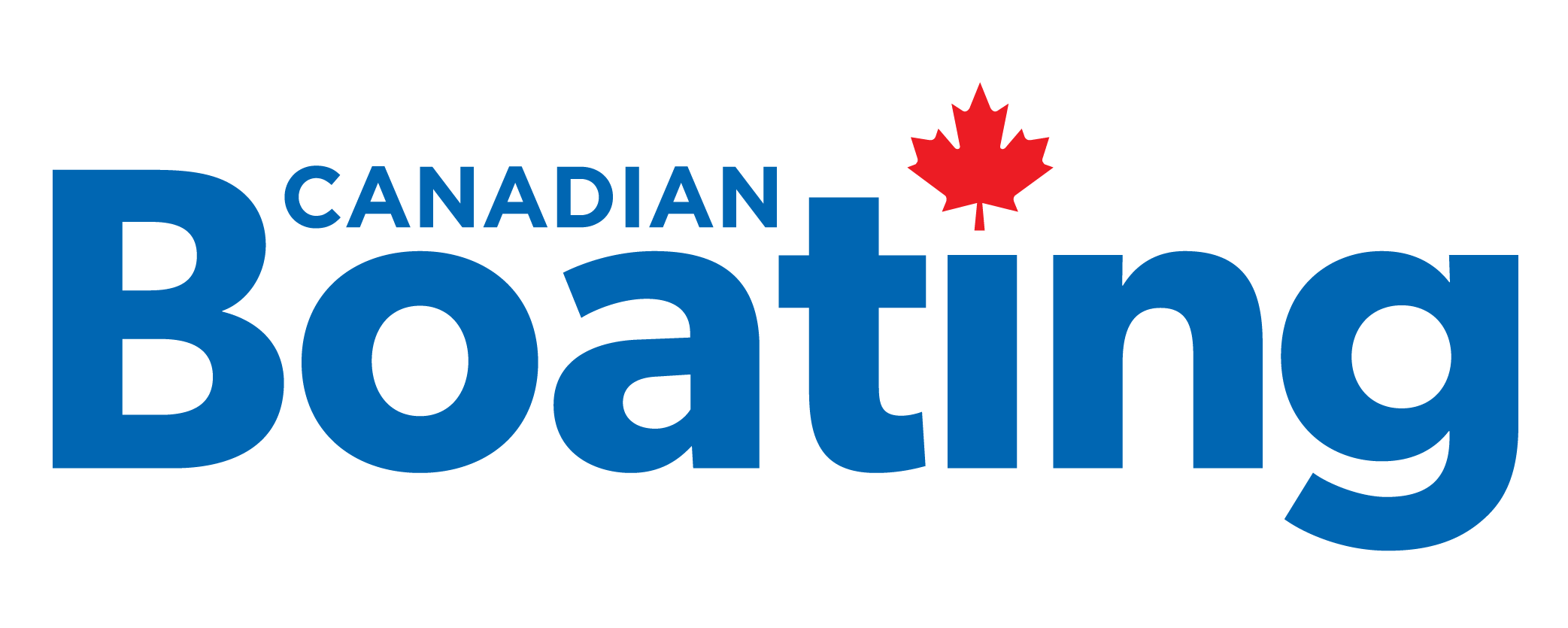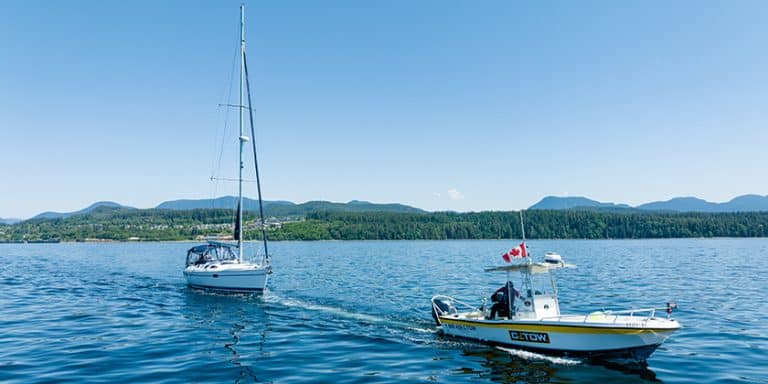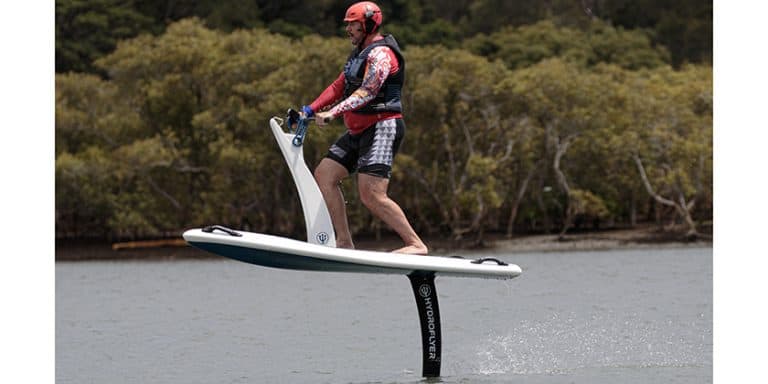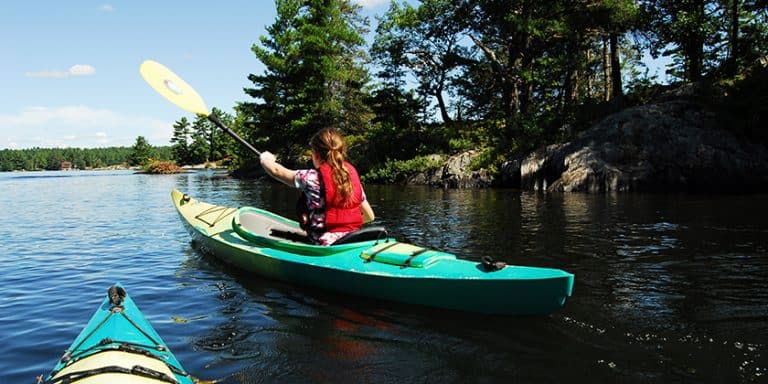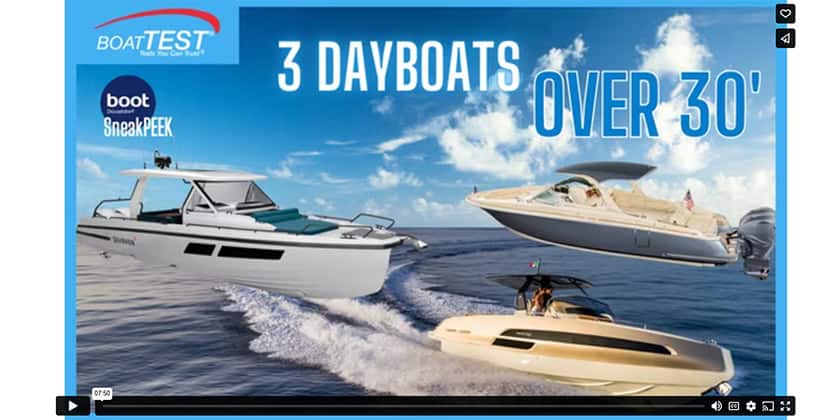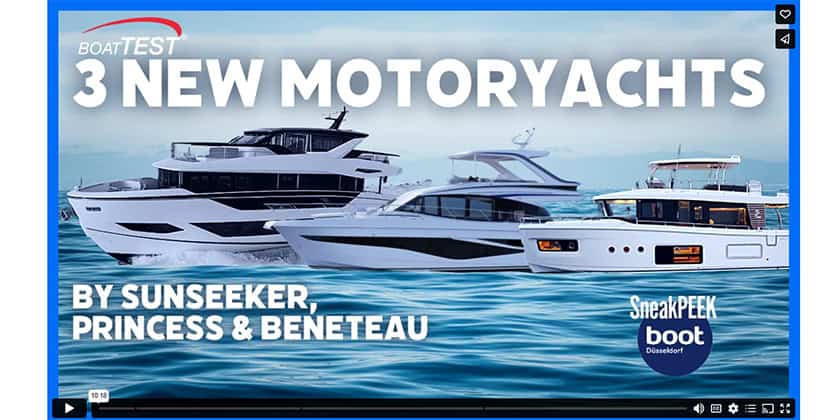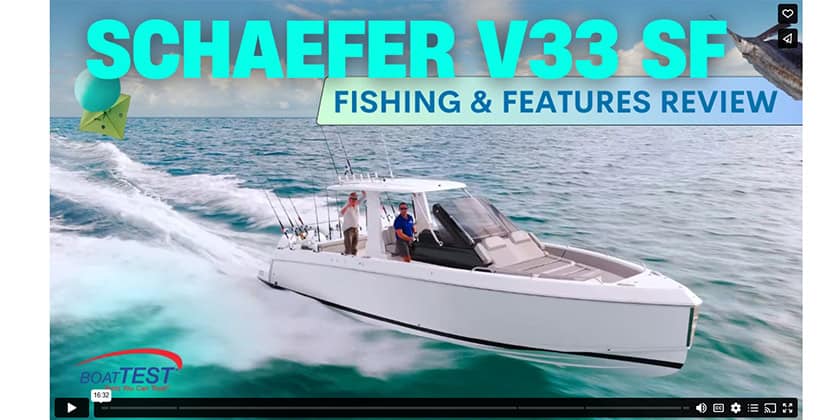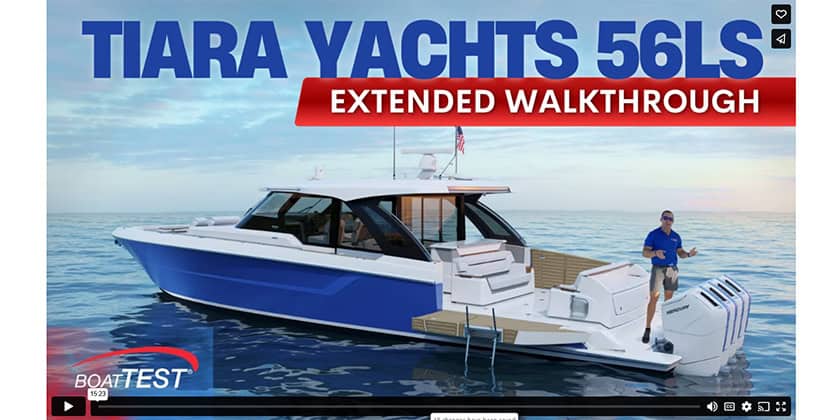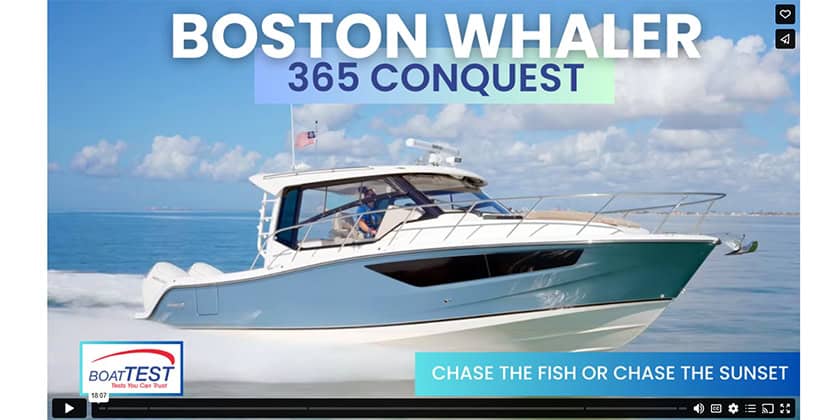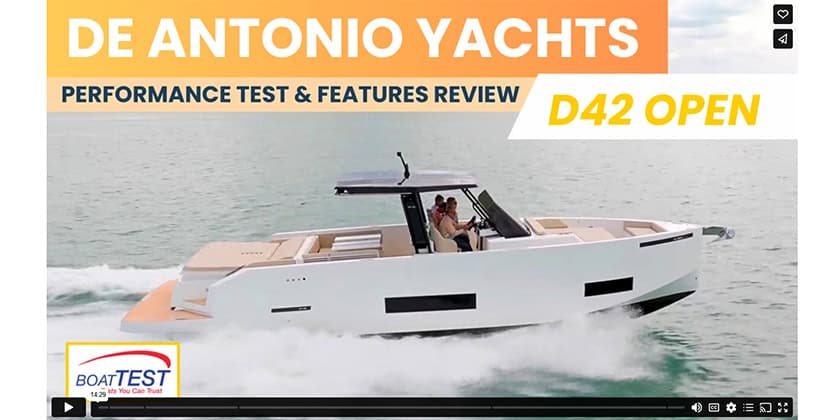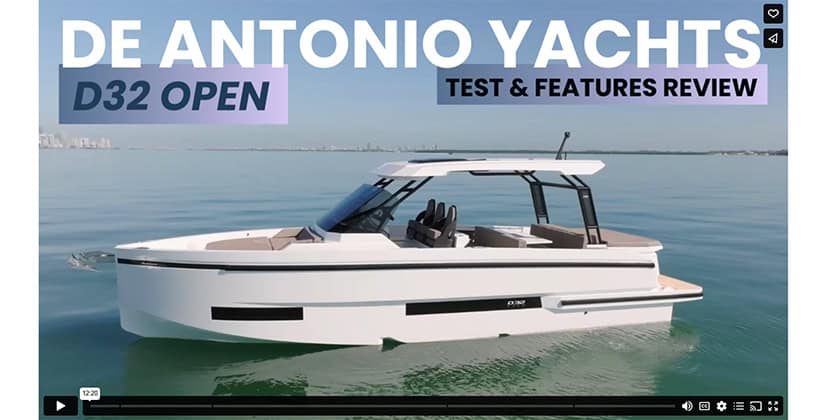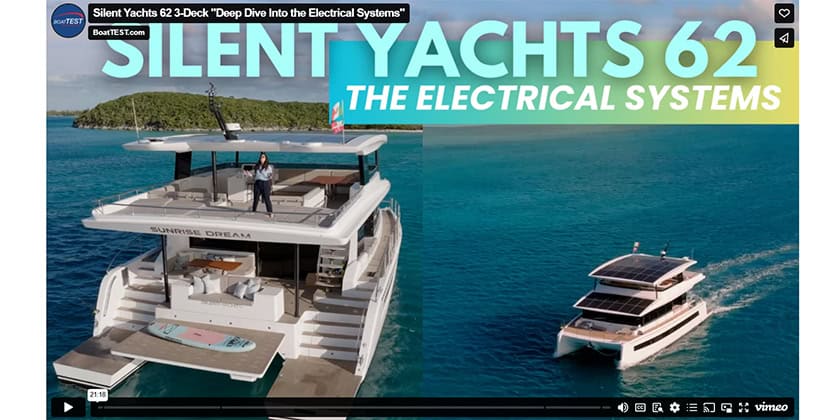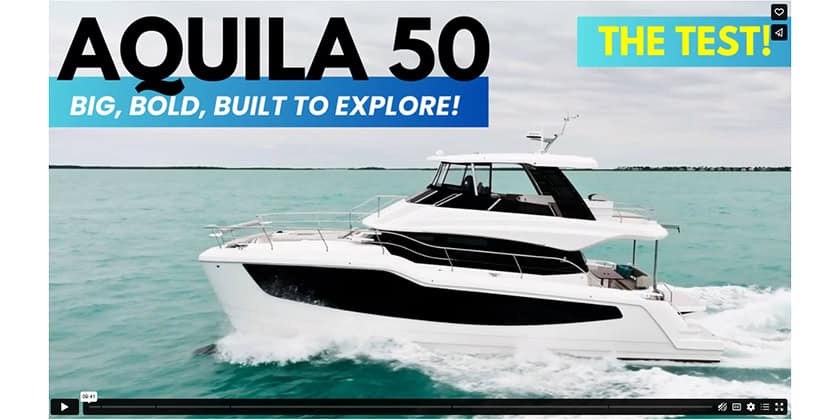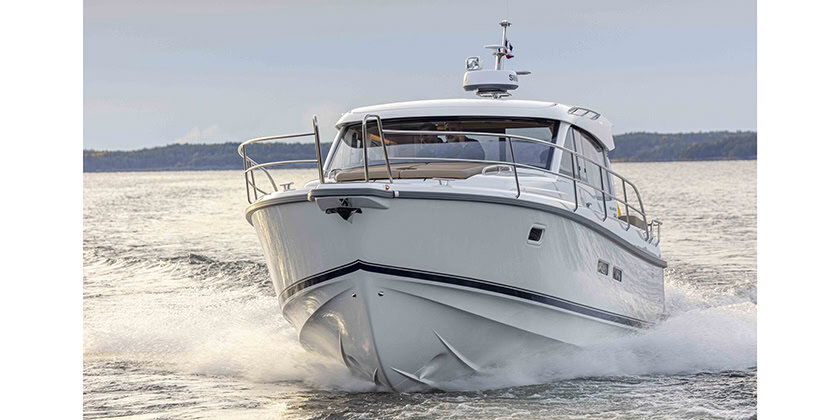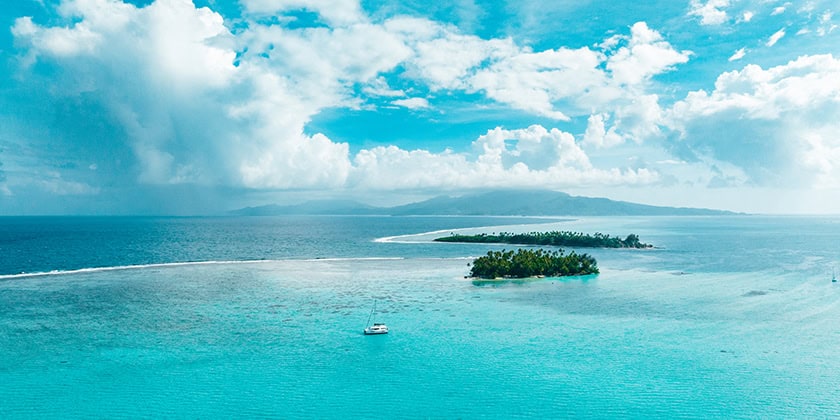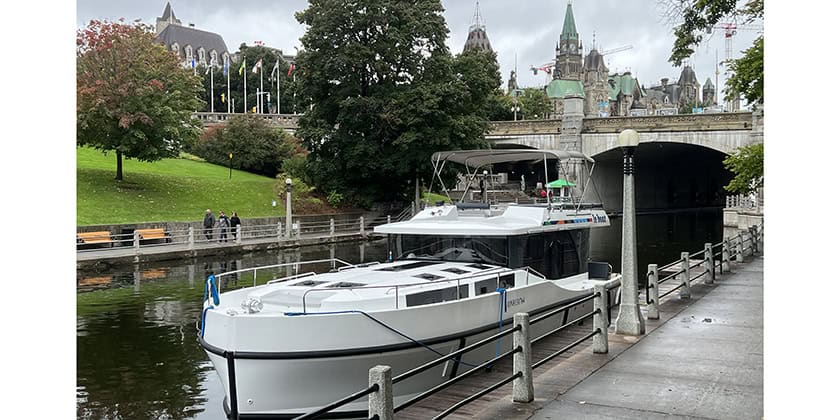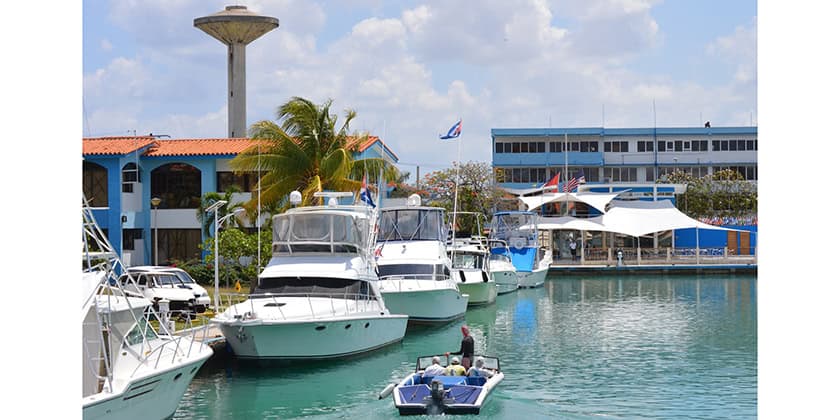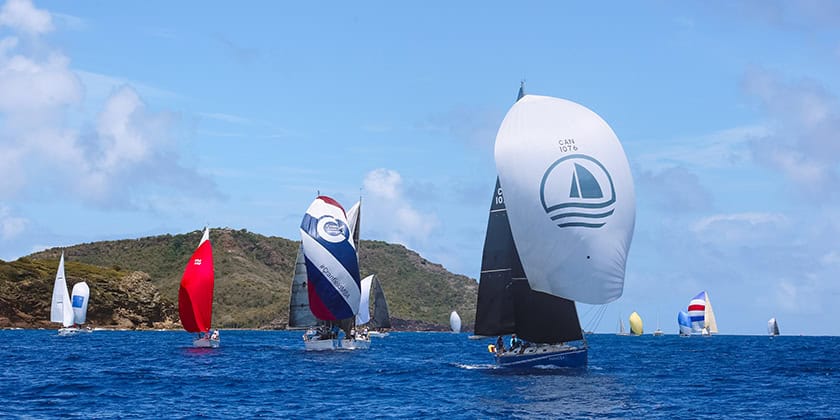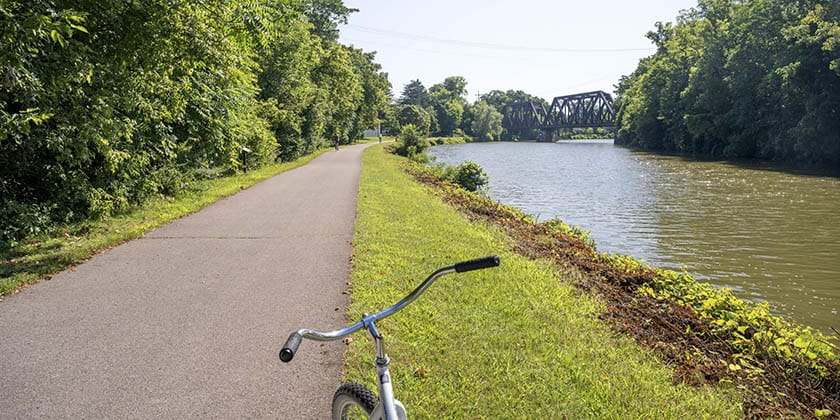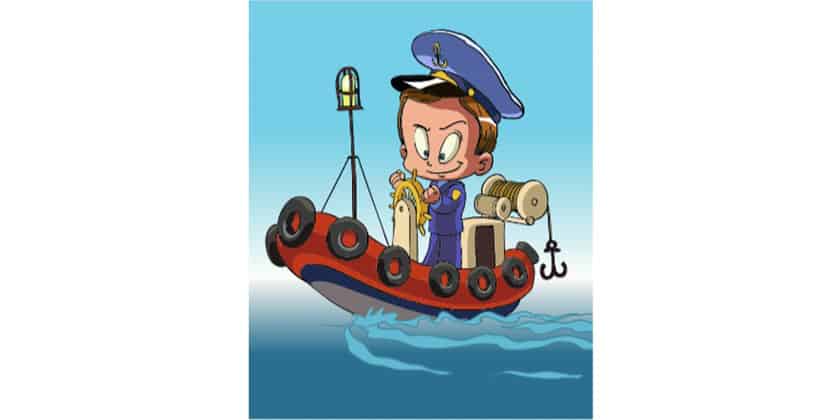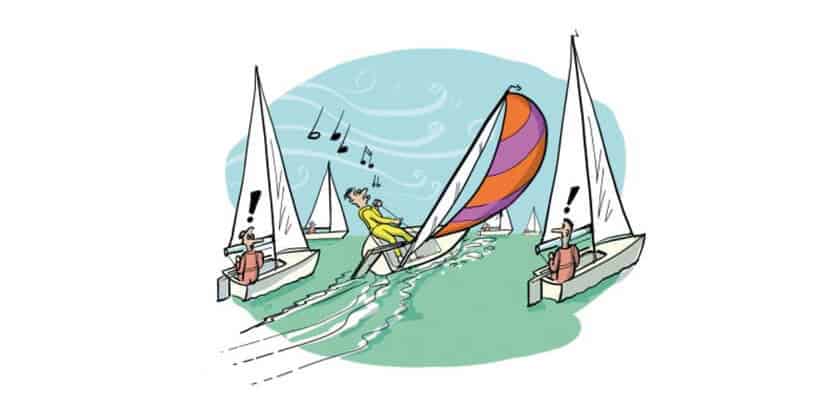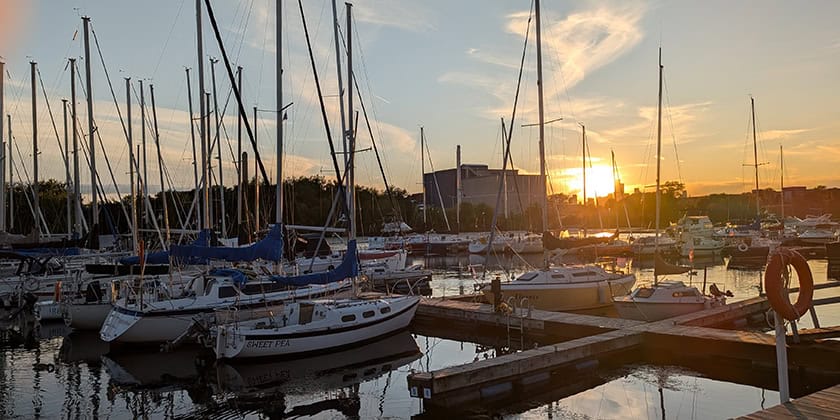Fly High or Ride the Waves: The Ultimate Board Sport Experience
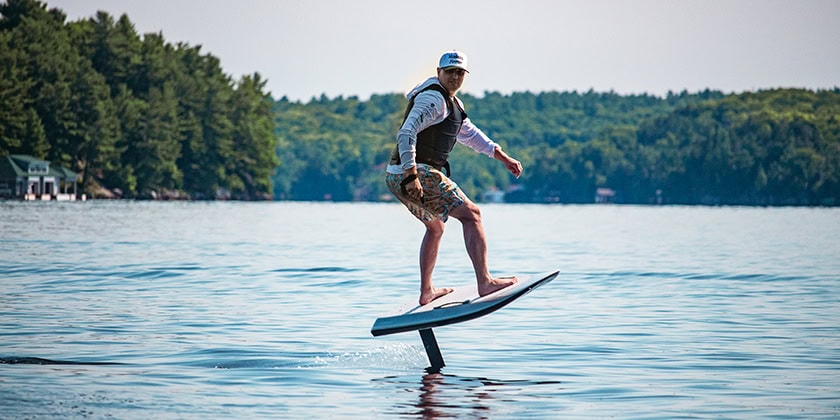
The Fliteboard models require a surfboard stance, and you use weight distribution to keep the board level while riding up on the foil.
By: Allegra Smith-Herriott
Photos: Dan Pickard
Last summer, my colleague Dan Pickard and I headed to the Muskokas in Ontario to explore some of the most unique boards in the water sports market. Board sports have skyrocketed in popularity, offering an intimate connection to the outdoors, like boating but with less between you and the water.
Traditional water sports often require a boat, spotter and calm water. But how often do all these elements align in a season? What if you didn’t need a boat, or even flat water? That’s exactly what we wanted to find out.
Now this wasn’t anything like wakeboarding or wake surfing. I was jumping into some uncharted territory on the water. Two boards, completely different yet equally thrilling.
Electric vs. Motorized. Enter: Fliteboard and JETSURF.
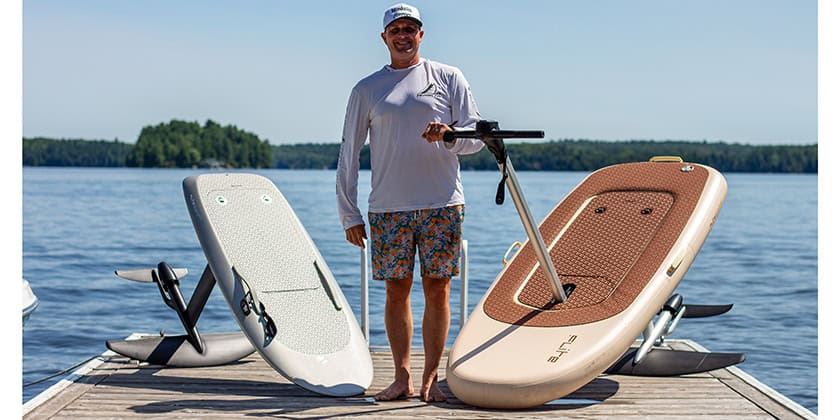
Take Flite!
“Foiling” has become a global phenomenon, with variations like wing foiling, SUP foiling and eFoiling. Originating in Australia, Fliteboard is an electric hydrofoil surfboard—also known as an eFoil—that allows riders to glide silently above the water using a handheld Flite Controller. The board’s Flitecell batteries power a submerged propulsion unit, creating this futuristic experience.
On a serene July morning at Lake Rosseau, we met SWS Muskoka Flite expert Charlie Newlands, who guided us through a flite session. Charlie had two models for us to try: the Fliteboard PRO and Flitescooter. To start, Charlie took both boards out on the water to show us how it was done. It was mesmerizing, watching him flying high carving gracefully across the lake, doing spins and high speed toe and heel side maneuvers, making it look easy. Fliteboard can feel similar to snowboarding with the layout carving turns. It was then that I thought to myself, how would I possibly learn how to take flite within the span of a few hours?
I began with the Flitescooter, the bigger and more stable board equipped with removable handlebars. To control the board, you wear a key kill switch on your wrist that’s paired with the Flite Controller on the handlebars, which you use to adjust your speed. Charlie came out on the Fliteboard to coach me.

I rode the board slowly, staying on the surface of the water, to practice balance and speed control. And then it was time to get up on the foil. Picture a bucking bronco. After several wipeouts, persistence paid off. To foil, your speed needs to be around 10-15 mph. As a newbie, that speed is a bit intimidating, especially up in the air!
But the moment I rose above the water on the foil was magical. The world becomes completely quiet, creating a serene, exhilarating sensation of flying. There’s no other feeling I have experienced that can compare.
The Fliteboard PRO was a bit more challenging but equally rewarding. Similar to surfing, you start on your stomach and progress to your knees and ultimately to standing. The Flite Controller is a remote you hold in your hand. I was glad I started with the Flitescooter as I had a better sense of what it was like to ride the foil when it was time to learn the surfboard version. After trying both models, which were equally as fun, I slightly preferred the Fliteboard PRO. It gave a better sense of surfing, and I felt more fluid and agile with more freedom of movement. However, the Flitescooter is great for beginners and can be ridden by anyone.
Charlie was a great coach out on the water, and his best tip for me was yelling, “CHILL!” Once I relaxed and got past my rigid statue stance, controlling the foiling became much easier. I gradually learned weight distribution, speed control and letting the board do its thing. By the end of the session, we were foiling together across the lake!
Fliteboard’s various models cater to different skill levels, from the beginner friendly Flite AIR, to the lightweight, high-performance ULTRA L. You can also configure any board in many different ways. The electric motors make them an environmentally friendly watercraft by omitting emissions while on the water. The noise-free operation makes them ideal for quiet lakes and bays and riding them up on the foil minimizes the effect of rough water conditions. Ride times range from 45 – 150 minutes depending on which battery you use, and you can reach speeds up to 50 km/h (30 mph). For precise data check out the Ride Time Calculator at fliteboard.com.
SWS Muskoka is a Canadian authorized Flite partner. They carry a wide range of boards, offer lessons and service Flite products. Charlie is your go-to guy for lessons and can get anyone up foiling in just one session. As proven from personal experience! As a beginner, I’d highly recommend getting a session with a professional like Charlie.
My time on Rosseau was no Australian ocean adventure, but it sure was an incredible day, with many magical moments to remember flying high above the water in the Muskokas with the entire lake to myself and not a sound to be heard.
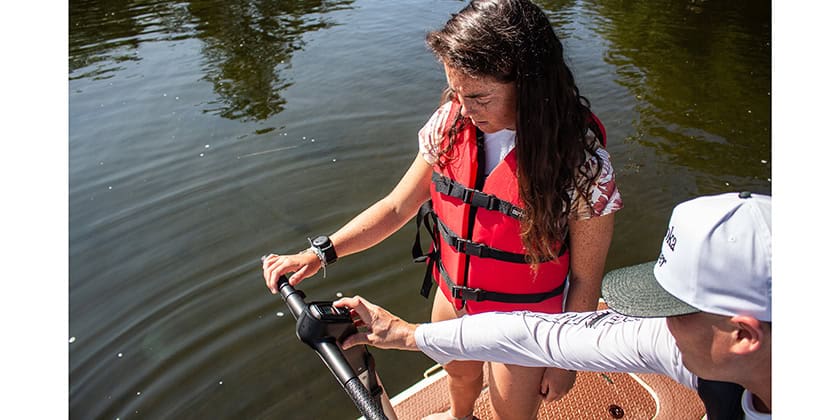
FLITEBOARD SPECS
Length / 5’8”
Width / 28”
Volume / 100 L
Weight / 67.9 lbs
FLITESCOOTER SPECS
Length / 7’0″
Width / 35”
Volume / 237 L
Weight / 84 lbs
Models starting at $18,605.00 CAD
More information: swsmuskoka.com / fliteboard.com
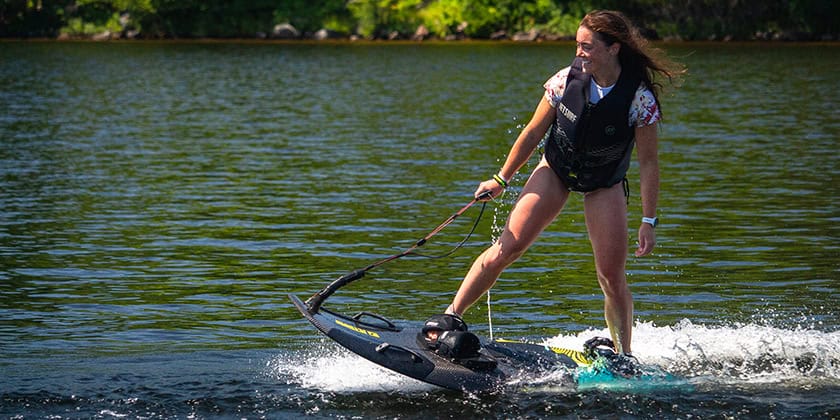
Pushing the Limits of Surfing
Next, Dan and I crossed the lake for a completely different experience. We met up with the JETSURF Canada distributors Mark Andrews and Reanna Deveau. JETSURF, designed and manufactured in the Czech Republic, is a lightweight, motorized surfboard, allowing riders to experience the thrill of wakeboarding or surfing without the waves of a boat or a consistent swell on the coast. My prior water sports experience had been with non-motorized equipment, so I was intrigued to test out a JETSURF.
We arrived at Rosseau Bay and headed out with our hosts and JETSURF star, Pickles (the miniature surfing dachshund!). The first board I tried was the JETSURF Adventure DFI. As a beginner, I started in the water swimming beside the board. The throttle is attached to the front of the board, which you hold in your hand. Once you get the board going using the safety switch on the throttle, you have a few seconds to jump on, hit the trigger and go before it stalls, a great safety feature for novice riders. Before mastering the technique, the first time I leaped onto the board, I pressed the throttle too hard and shot off like a torpedo.
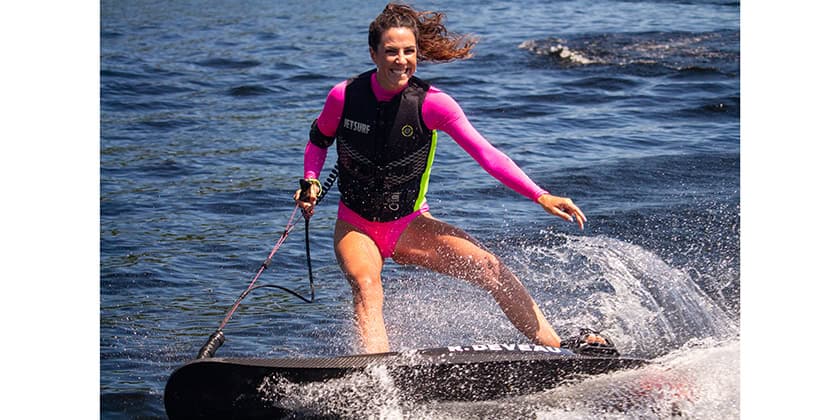
The board’s versatility allowed me to ride lying down to start, and I quickly progressed to kneeling and then standing. The board features bindings for regular or goofy foot riders and a throttle-equipped safety key kill switch. I found that both the bindings and the attached throttle provided extra assistance and balance when first standing up. I quickly found my footing and learned the throttle sensitivity and before I knew it, I was surfing around the bay.
Reanna came out on her own board and guided me to do sharper turns. The sensation of carving through the bay together was pure exhilaration. I became braver and pushed the speed limits. The boards can reach top speeds of 55 km/h (35 mph), powered by a Jet-Pump direct drive. Despite the powerful engine, the ride was quieter than I expected and remarkably smooth. Again, learning to control the board was all about weight distribution and being relaxed. I found that I was able to pick up the JETSURF quicker. Always being in contact with the water and the JETSURF’s precise throttle control definitely helped.
JETSURF also offers an electric version, which shares the same design but uses a battery-powered propulsion system. When testing out the electric board, I didn’t notice much difference other than a bit less “pep” in using the throttle. It’s quieter and the ride time is reduced compared to the motorized version, but the company continues to develop and refine the electric version for better performance and battery life.
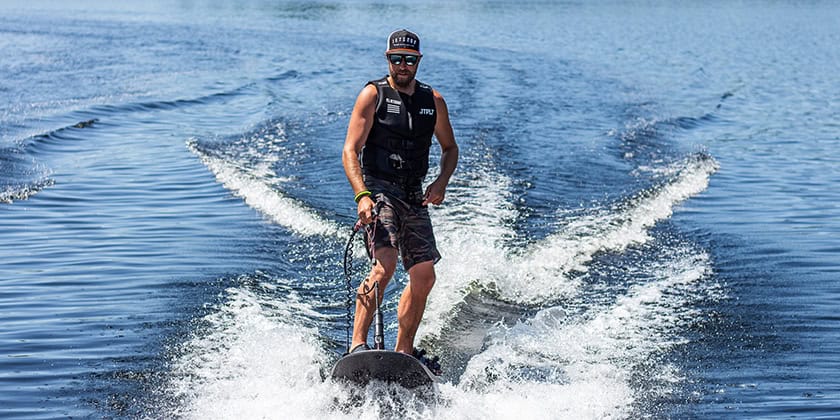
The engines in the gas-powered boards are one of the cleanest burning engines on the market given their small size and small amount of fuel consumed. The boards can and eventually will run on biofuel, making them even more of a sustainable watercraft.
Both models cater to a range of riders, from casual cruisers to competitive racers. JETSURFing has even evolved into an international racing series. Mark and Reanna are top Canadian JETSURFers that compete in the MotoSurf World Cup events. Not only do they provide all types of JETSURF models, but they also offer lessons, demos, board deliveries and more. Again, I’d highly recommend getting a session with a professional if you’re a beginner as the tips and tricks they provide are invaluable.
The boards’ lightweight carbon fibre construction makes them easy to transport. There are optional accessories like removable handlebars and inflatable training tubes, enhancing their versatility. With a fuel capacity of 2.8 L, the JETSURF Adventure DFI can run up to around 1.5 hours. But adding an external gas tank strapped to the front of the board lets you virtually surf forever. Just find a refuelling station along the way, top up your tank and keep surfing. Perfect for exploring remote waterways with friends and family.
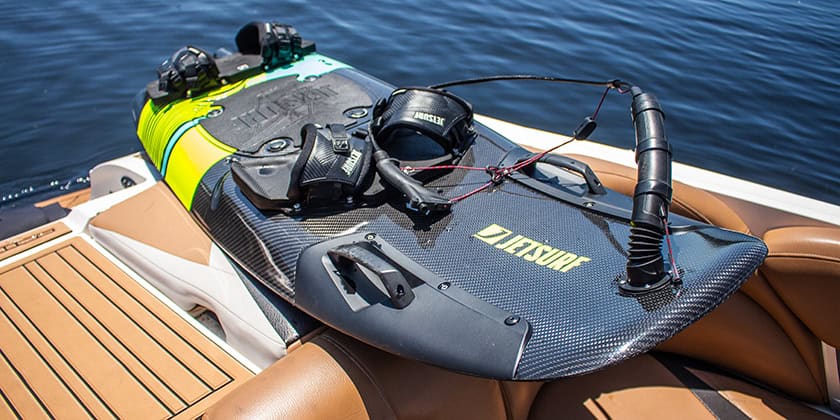
Surfing alongside the top JETSURFers in the country, I could picture myself at the next MotoSurf World Cup. It may be a far-off dream, after just one session on the water, I was hooked.
ADVENTURE DFI SPECS
Length / 70.87”
Width / 23.62”
Weight / 40.8 lbs
Max Load / 264 lbs
Fuel Capacity / 2.8 L
Engine / 2 stroke NG 100 DFI
Displacement / 100 CC
Models starting at $16,000.00 CAD
More information: jetsurfcanada.com
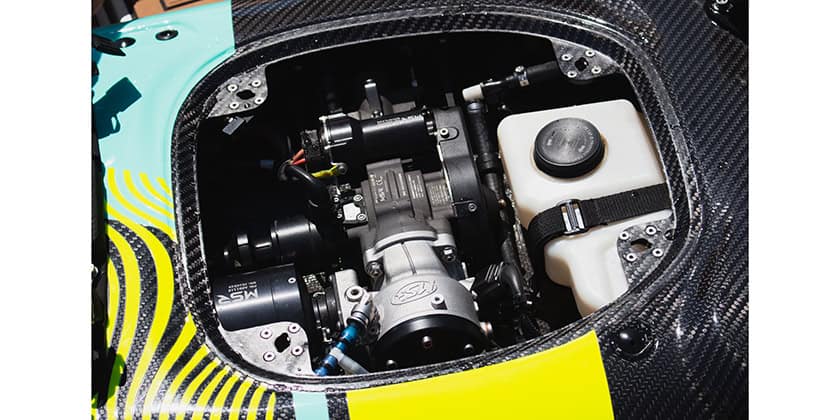
Boards, Boards and More Boards
Hydroflyer, born and developed in Canada, is an advanced eFoil board that combines the sensation of flying on an eFoil with the control of a stand-up jet-ski. Its hover-board-like qualities and four-point handlebar system offer enhanced control, making it even easier to start and finish rides without getting wet. The board is highly approachable for beginners due to its added stability, but it also caters to adrenaline junkies with its high-performance capabilities.
More information: thehydroflyer.com
Lift Foils is another company available in Canada that offers a wide range of eFoils. This family-run business provides options for every type of rider, from beginners to experts. In addition to multiple generations of eFoils, Lift offers hydrofoil boards for towing, kiting, winging, SUPing and more. Their products are fully customizable, and many Canadian-certified partners make it easy to try before you buy.
More information: liftfoils.com
Choosing Your Ride
Our day in the Muskokas highlighted the incredible advancements in board sports technology. The boards completely exceeded my expectations of how fun and safe they would be.
Before investing, consider factors like water conditions, skill level and personal preferences. I’d highly recommend testing out a board first. The board companies offer lessons, demos and customizable options, ensuring you find the best fit for your water adventures.
Whether you prefer the serene, magical glide of the Fliteboard or the adrenaline-pumping speed of the JETSURF, these boards offer something for everyone. They’re both exhilarating in their own unique way and a great form of exercise. And the possibilities are endless—from quiet solo rides to thrilling group adventures.
So… electric or motorized? Will you fly high or ride the waves? The choice is yours.
Disclaimer: There are laws and regulations for certain watercraft determined by Transport Canada. The views expressed in this article are based on personal experience. Canadian Boating is not liable for any misleading information regarding legal use of the watercraft mentioned in this article. It is suggested that readers keep informed on the changing laws related to using boards on their waterways.
